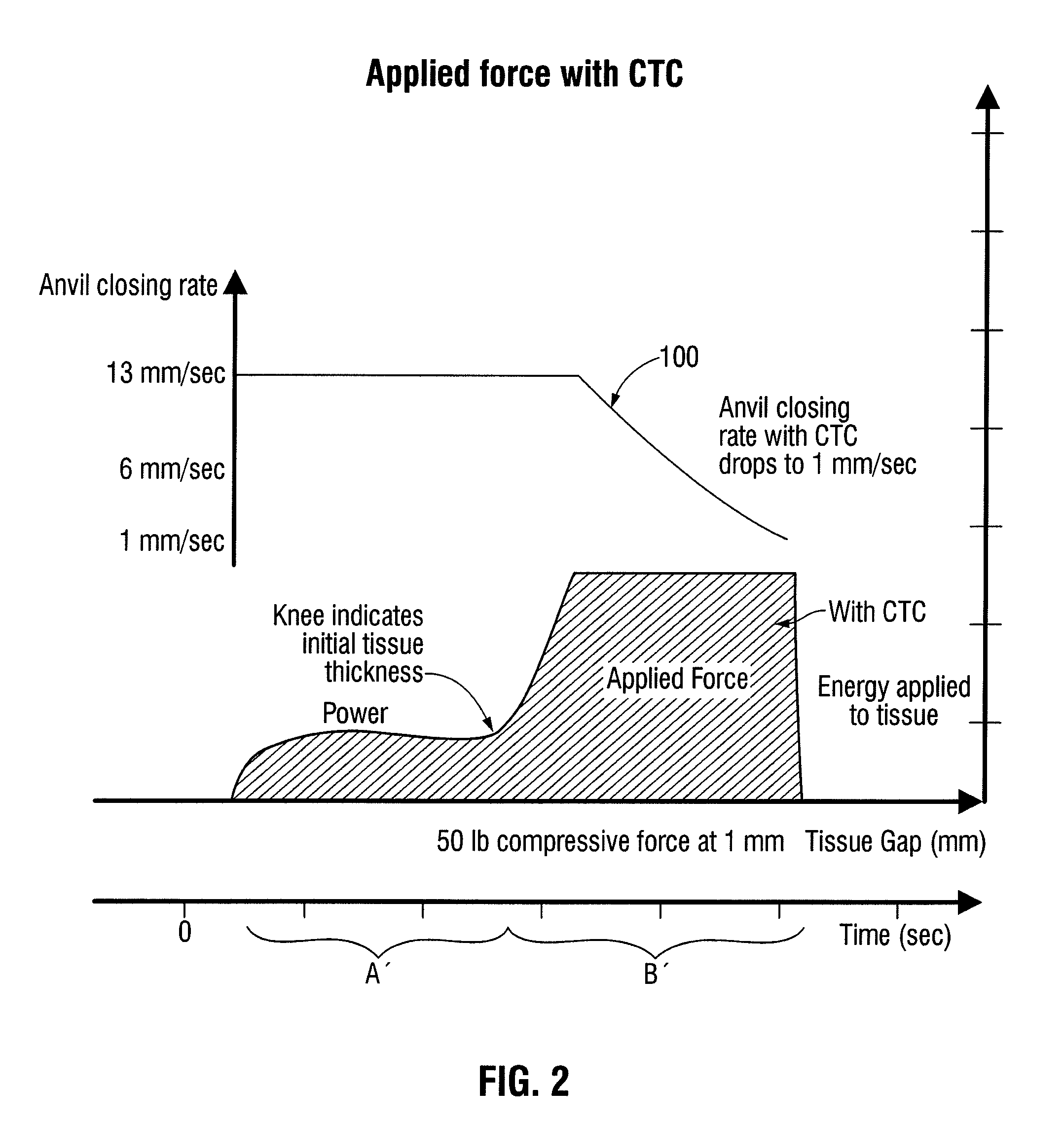Device and method for controlling compression of tissue
a tissue compression and device technology, applied in the field of medical devices, can solve the problems of insufficient tissue closing of staples, inability to maintain a uniform target tissue gap across the length of tissue to be stapled, and inability to prevent contamination. the initial stapled gap is too large, so as to reduce the closing rate
- Summary
- Abstract
- Description
- Claims
- Application Information
AI Technical Summary
Benefits of technology
Problems solved by technology
Method used
Image
Examples
Embodiment Construction
[0052]During compression of a patient's tissue, hydraulic effects are present as a result of the composition (e.g., the presence of fluids, etc.) of the tissue. In this regard, hydraulic resistance may be measured and used as feedback for the closing of the clamping elements.
[0053]When clamping the patient's tissue, forces exerted through the clamping device, e.g., a linear stapler, and the tissue may reach an unacceptably high level. For example, when a constant closure rate is employed, the force may become high enough to cause excess trauma to the clamped tissue and may cause deformation in the clamping device such that an acceptable tissue gap is not maintained across the stapling path. For example, an acceptable tissue gap may be in the range of, e.g., 1 mm±0.4 mm,
[0054]1mm+0.4-0.3mm
(0.7 mm to 1.4 mm), etc. Referring to FIGS. 6a and 6b, linear surgical staplers 1000 and 1100 are schematically illustrated when exerting a clamping force on a section of tissue.
[0055]As illus...
PUM
| Property | Measurement | Unit |
|---|---|---|
| thickness | aaaaa | aaaaa |
| clamping force | aaaaa | aaaaa |
| voltage | aaaaa | aaaaa |
Abstract
Description
Claims
Application Information
 Login to View More
Login to View More - R&D
- Intellectual Property
- Life Sciences
- Materials
- Tech Scout
- Unparalleled Data Quality
- Higher Quality Content
- 60% Fewer Hallucinations
Browse by: Latest US Patents, China's latest patents, Technical Efficacy Thesaurus, Application Domain, Technology Topic, Popular Technical Reports.
© 2025 PatSnap. All rights reserved.Legal|Privacy policy|Modern Slavery Act Transparency Statement|Sitemap|About US| Contact US: help@patsnap.com



